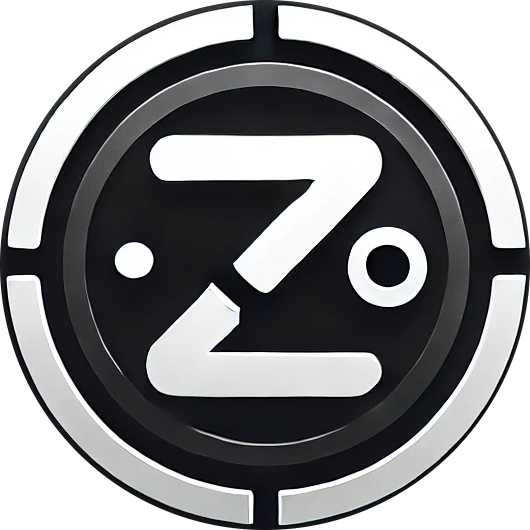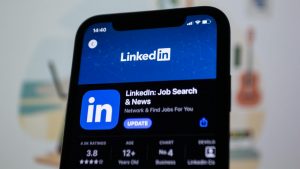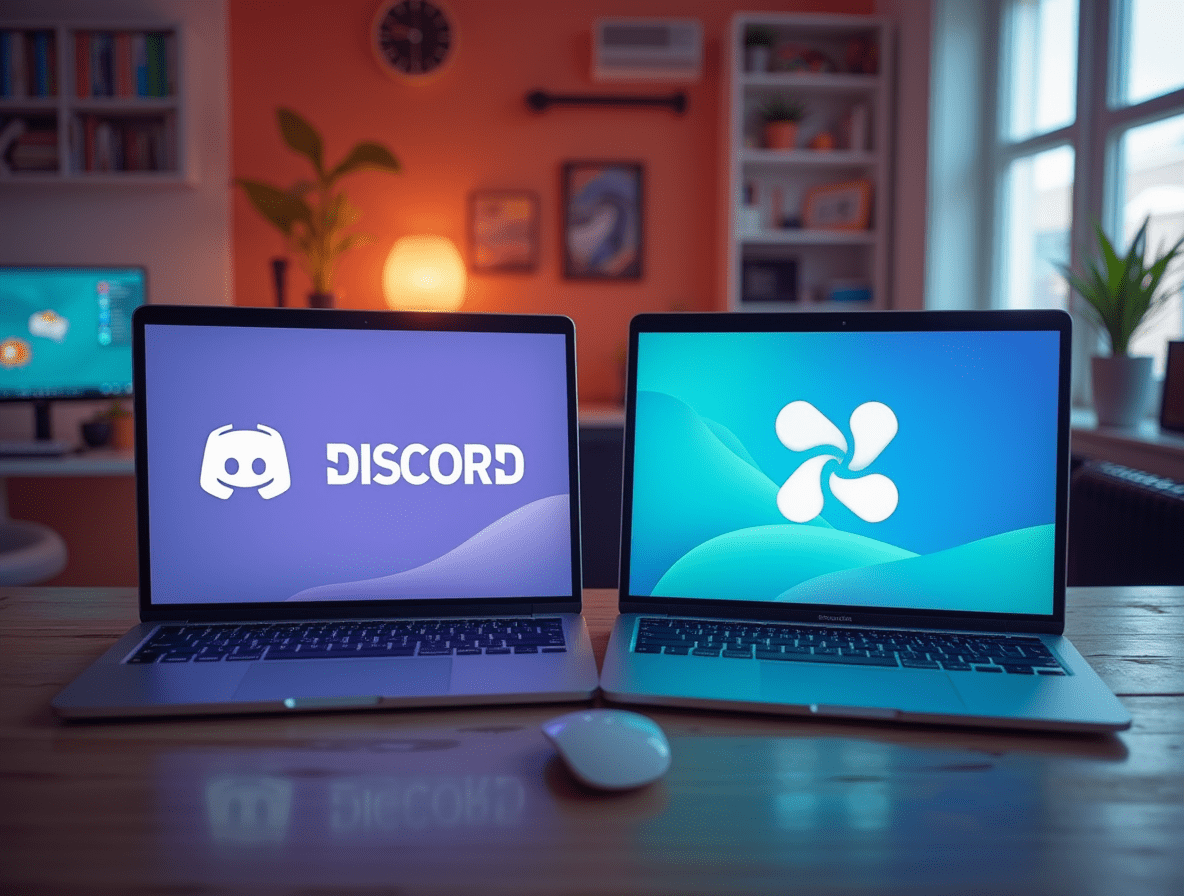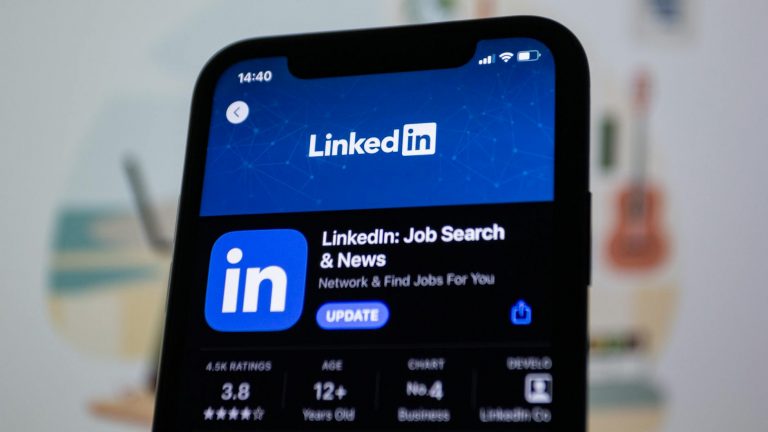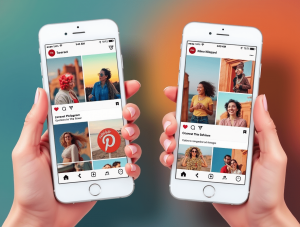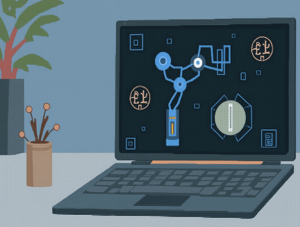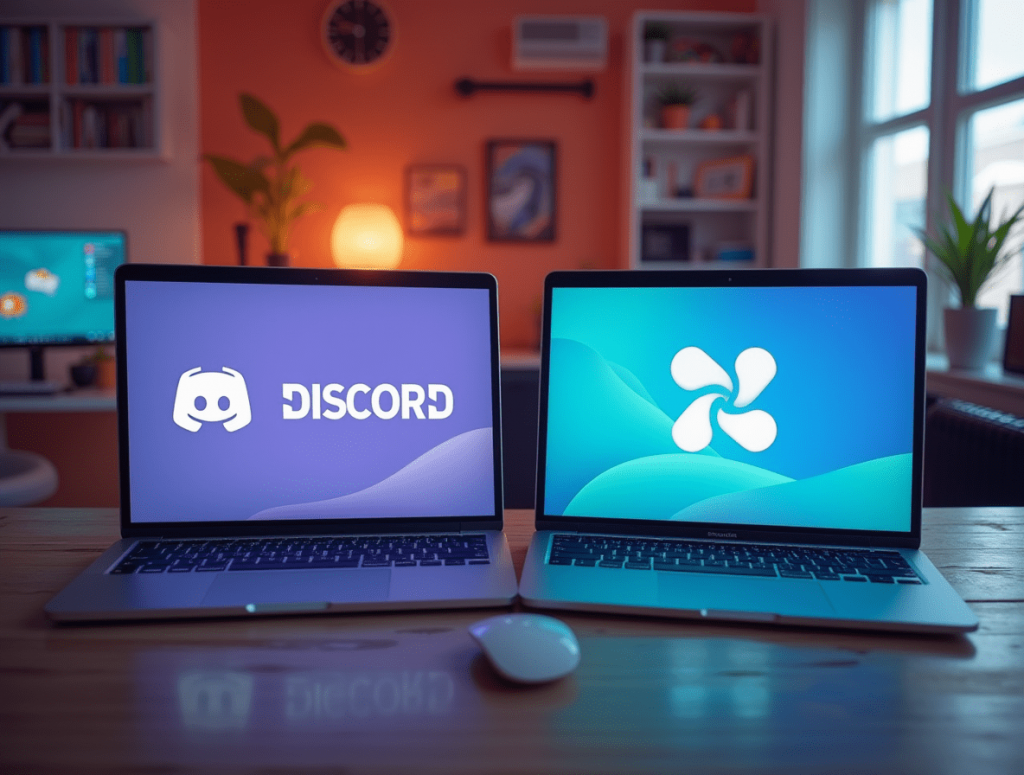
Discord vs Slack: The Ultimate Team Communication Platform Comparison
In today’s remote and hybrid work environments, team communication platforms have become essential infrastructure rather than optional tools. Recent workplace studies show that teams using the right communication platform report 20-25% higher productivity and significantly better collaboration outcomes. Yet choosing between the major platforms—particularly Discord and Slack—has become increasingly challenging as both continue to evolve beyond their original purposes.
While both Discord and Slack enable messaging and collaboration, they were designed with fundamentally different intentions and audiences in mind. Discord originated in the gaming community as a way for players to communicate during gameplay, while Slack was built from the ground up for business teams and workplace collaboration. However, over time, these distinct origins have blurred as both platforms have expanded their feature sets and target audiences.
This guide will examine how Discord and Slack approach team communication through different lenses, analyzing their strengths, limitations, and ideal use cases to help you determine which platform might better serve your specific team needs.
Platform Origins and Design Philosophy
Discord: Born from Gaming Communities
Discord launched in 2015 with a clear focus on creating seamless communication for gaming communities. This gaming heritage continues to influence its design philosophy in several important ways:
- Community-First Approach: Built around the concept of “servers” that function as persistent community spaces
- Voice-Centric Design: Optimized initially for real-time voice communication during gameplay
- Identity Management: Supports pseudonymous identities and avatar-based presence
- Accessibility Focus: Designed to run alongside resource-intensive applications (games)
Discord’s evolution has been guided by what founder Jason Citron describes as creating “a place for belonging” rather than simply a communication tool. This focus on fostering community remains central even as the platform has expanded beyond gaming.
Slack: Designed for Workplace Productivity
Slack, launched in 2013, was conceptualized specifically as a solution to workplace email overload and fragmented business communication. Its design principles reflect this business-oriented foundation:
- Work-Centric Organization: Structured around “workspaces” that represent organizations or teams
- Text-First Communication: Originally optimized for asynchronous text messaging and file sharing
- Professional Identity: Built with the assumption that users represent their professional selves
- Integration-Friendly: Designed from day one to connect with other business applications
Slack’s guiding principle, according to co-founder Stewart Butterfield, was to increase organizational transparency and reduce information silos. This workplace efficiency focus continues to drive its development priorities.
Interface and Organization Structure
Discord’s Server-Based Organization
Discord organizes communication around “servers,” which function as self-contained communities:
- Server Structure: Each server contains multiple channels divided into categories
- Channel Types: Text, voice, forum, and stage channels serve different communication needs
- Role-Based Permissions: Extensive permission system based on assigned roles
- Server Discovery: Public servers can be found through a directory
- Server Templates: Standardized configurations can be reused
This structure creates clear boundaries between different communities, which has advantages for managing multiple distinct groups but can create challenges for cross-team collaboration.
Slack’s Workspace-Based Organization
Slack uses “workspaces” as its primary organizational unit:
- Workspace Structure: Each workspace contains channels and direct messages
- Channel Types: Public channels, private channels, and shared channels between organizations
- Simplified Permissions: Less granular permission controls than Discord
- Organization-Level Integration: Enterprise Grid connects multiple workspaces
- Centralized Administration: More unified management tools for organization owners
This approach creates a more cohesive environment for formal organizational structures but can be less flexible for managing multiple disparate communities.
Communication Features and Capabilities
Core Messaging Capabilities
Both platforms offer robust text messaging features with some notable differences:
Discord:
- Message formatting with Markdown
- Embedded content previews
- Reply threading within channels
- Emoji reactions and custom emojis
- Higher character limits (4,000 characters)
- Message search capabilities
Slack:
- More business-oriented formatting options
- Robust file sharing with previews
- More developed threading system
- Emoji reactions and custom emojis
- Lower character limits (2,000 characters)
- More powerful search functionality with filters
While both platforms handle text communication effectively, Slack generally offers more refined text messaging capabilities for professional contexts, while Discord provides more expression-focused features.
Voice and Video Communication
The platforms diverge significantly in their approach to voice and video:
Discord:
- Persistent voice channels that users can join and leave at will
- High-quality, low-latency voice optimized for continuous use
- Screen sharing with specific application selection
- Video chat for up to 25 users simultaneously
- “Go Live” streaming feature for sharing gameplay or applications
- Stage channels for moderated audio events
Slack:
- Meeting-style voice and video calls rather than persistent rooms
- Huddles feature for ad-hoc audio conversations
- Screen sharing with annotation capabilities
- Video meetings for up to 15 users (free plan limits apply)
- Call recordings and transcriptions (paid plans)
- Integration with enterprise video platforms
Discord’s voice capabilities are generally considered superior for continuous ambient connection, while Slack’s approach is more suited to scheduled, discrete meetings.
Integration Ecosystems
Discord’s Integration Capabilities
Discord’s integration ecosystem has evolved significantly:
- Bot Framework: Powerful custom bot development capabilities
- App Discovery: Growing app directory with community-created integrations
- Webhook Support: Push notifications from external services
- API Access: Comprehensive API for custom integrations
- Limited Enterprise Integrations: Fewer native integrations with business tools
- Community Focus: Many integrations centered around community management and entertainment
While Discord’s integration capabilities are robust, they remain more focused on community engagement and entertainment than workplace productivity.
Slack’s Integration Ecosystem
Slack’s integration ecosystem is a core strength of the platform:
- App Directory: Extensive marketplace with 2,400+ pre-built integrations
- Enterprise Software Focus: Deep integration with major business applications
- Workflow Builder: No-code automation creation
- API Ecosystem: Well-documented API with many developers
- Unified Activity Feed: Centralized notification management
- Security Certifications: Enterprise-grade security for integrations
Slack’s integration capabilities are significantly more developed for business use cases, particularly for enterprises using multiple software tools.
Security, Privacy, and Compliance
Discord’s Security Approach
Discord’s security features have expanded but retain some community-oriented characteristics:
- Encryption: In-transit encryption but no end-to-end encryption
- Authentication: Two-factor authentication options
- Permission System: Granular role-based permissions within servers
- Content Moderation: Built-in tools and AutoMod features
- Limited Compliance Features: Fewer enterprise compliance certifications
- Data Retention: Limited data retention controls
While Discord has strengthened its security features, it lacks many of the compliance certifications and security capabilities that regulated businesses require.
Slack’s Security Approach
Slack offers more comprehensive security features aimed at business needs:
- Encryption: In-transit and at-rest encryption with Enterprise Key Management options
- Authentication: SAML, SCIM, and advanced 2FA options
- Compliance Certifications: SOC 2, SOC 3, ISO/IEC 27001, HIPAA (Enterprise Grid)
- DLP Integration: Data Loss Prevention capabilities
- Audit Logs: Comprehensive logging for security monitoring
- Data Retention: Customizable retention policies
Slack’s security features are significantly more developed for regulated industries and enterprises with strict compliance requirements.
Mobile Experience and Cross-Platform Support
Discord’s Mobile and Cross-Platform Experience
Discord provides a consistent experience across devices:
- Cross-Platform Design: Similar interface across mobile and desktop
- Mobile Performance: Optimized for lower resource consumption
- Notification Management: Granular notification settings per server and channel
- Background Voice: Can maintain voice connection while app is backgrounded
- Platform Support: Windows, macOS, Linux, iOS, Android, and web browser
Discord’s mobile experience is particularly strong for voice communication, reflecting its gaming origins where users might need to stay connected while away from their computers.
Slack’s Mobile and Cross-Platform Experience
Slack’s mobile experience focuses on business continuity:
- Business Continuity: Designed for seamless transition between devices
- Mobile Optimization: Interface adapted for mobile workflows
- Notification Intelligence: Smart notifications with priority settings
- Status Synchronization: Presence and status sync across devices
- Platform Support: Windows, macOS, iOS, Android, and web browser
Slack’s mobile experience prioritizes notification management and quick responses over continuous connection, reflecting workplace communication patterns.
Pricing and Cost Structure
Discord’s Pricing Model
Discord offers a more consumer-oriented pricing structure:
- Free Tier: Highly functional free version with generous limits
- Unlimited servers
- Unlimited message history
- Voice channels with good quality
- Video chat limited to 25 users
- File uploads limited to 25MB
- Discord Nitro ($9.99/month):
- Enhanced personal features (custom tags, higher upload limits)
- HD video streaming
- Custom emojis anywhere
- 100MB file uploads
- Profile customization
- Server Boosts (variable pricing):
- Community-driven server enhancement system
- Improved audio quality
- More emoji slots
- Higher upload limits for the server
Discord’s pricing focuses on enhancing individual expression and community capabilities rather than business features.
Slack’s Pricing Model
Slack uses a more traditional business SaaS pricing structure:
- Free Plan:
- 10K most recent messages
- 10 integrations
- 1-to-1 video calls
- Limited file storage (5GB total)
- Pro Plan ($7.25 per user/month, annually):
- Unlimited message history
- Unlimited integrations
- Group video calls
- 10GB storage per user
- Business+ ($12.50 per user/month, annually):
- Advanced security features
- Compliance exports
- 20GB storage per user
- 24/7 support
- Enterprise Grid (custom pricing):
- Organization-wide deployment
- Enterprise security and compliance
- Unlimited workspaces
- Advanced administration
Slack’s pricing is designed around business value metrics and scales with organization size, making it significantly more expensive for larger teams.
Use Cases and Ideal Deployment Scenarios
When Discord Excels
Discord proves particularly effective for:
- Creative Collaborators: Design teams, creative agencies, and multimedia production
- Community-Oriented Teams: Open source projects, user communities, and public interest groups
- Educational Environments: Study groups, bootcamps, and learning communities
- Mixed Formal/Informal Communication: Teams that blend social interaction with work
- Continuous Collaboration: Situations requiring persistent ambient connection
Discord’s strengths in voice communication and community building make it ideal for teams that value horizontal collaboration and persistent connection.
When Slack Excels
Slack typically performs better for:
- Traditional Business Teams: Professional environments with clear organizational structures
- Compliance-Sensitive Industries: Finance, healthcare, legal, and government
- Integration-Heavy Workflows: Teams using multiple business applications
- Enterprise Deployments: Large organizations requiring centralized administration
- Client-Facing Collaboration: Professional services firms working with external clients
Slack’s strengths in business integrations and security make it preferable for formal organizational use, particularly in regulated industries.
User Experience and Learning Curve
Discord’s Learning Experience
Discord presents a distinctive learning experience:
- Initial Complexity: More features and options visible upfront
- Gaming Terminology: Uses terms like “servers” and “channels” familiar to gaming communities
- Community Learning: Often learned through participation rather than formal onboarding
- Feature Discovery: Some advanced features less immediately obvious
- Customization Learning: Server setup requires understanding of roles and permissions
For users without gaming background, Discord often presents a steeper initial learning curve but offers more customization for those who master it.
Slack’s Learning Experience
Slack provides a more business-oriented learning path:
- Guided Onboarding: More structured introduction to key features
- Business Terminology: Uses familiar workplace terms like “channels” and “direct messages”
- Documentation Focus: Comprehensive help center and tutorials
- Progressive Disclosure: Reveals complexity gradually as users advance
- Administrator Support: Better tools for helping teams adopt the platform
Slack is typically easier for traditional workplace teams to adopt initially, but some advanced features like workflows require dedicated learning.
Community and Support Resources
Discord’s Community and Support
Discord’s support ecosystem reflects its community roots:
- User Communities: Robust user-to-user help communities
- Documentation: Improving but less comprehensive than Slack
- Support Access: Limited direct support except for critical issues
- Development Transparency: Public test server for upcoming features
- User Feedback: Strong culture of community input on features
Discord’s support model relies heavily on community resources, with official support playing a secondary role.
Slack’s Community and Support
Slack offers more traditional business support:
- Help Center: Extensive documentation and tutorials
- Direct Support: Tiered support based on plan level
- Account Management: Dedicated success managers for enterprise customers
- Training Resources: Webinars and certification programs
- Developer Community: Active development community with official support
Slack’s support structure is more typical of enterprise software, with official channels taking precedence over community support.
Future Development and Innovation Trajectory
Discord’s Development Direction
Discord’s recent and planned developments suggest these priorities:
- Platform Expansion: Broader positioning beyond gaming communities
- Commerce Features: Subscription management and monetization tools
- Enhanced Media Sharing: Improved embedded content and multimedia capabilities
- App Platform Enrichment: More powerful app development framework
- Organizational Features: Gradual addition of more workplace-friendly features
While Discord is expanding beyond gaming, its development still emphasizes community building over workplace productivity.
Slack’s Development Direction
Slack’s innovation trajectory focuses on these areas:
- AI Assistance: Integration of AI for information retrieval and workflow automation
- Async-First Features: Tools designed for distributed and asynchronous work
- Platform Consolidation: Becoming a central hub for workplace tools
- Enterprise Security: Continuous enhancement of security and compliance
- Digital HQ Concept: Creating a more complete virtual workplace
Slack continues to prioritize features that integrate with and enhance existing business workflows over community-building capabilities.
Conclusion: Choosing the Right Platform for Your Team
Both Discord and Slack are powerful communication platforms, but they excel in different environments and for different team types. Your choice should align with your team’s specific communication needs, culture, and technical requirements.
Choose Discord when:
- Your team values persistent voice communication and community building
- You need flexible role-based permissions for community management
- Your budget favors a feature-rich free tier or lower per-user costs
- Your team already has gaming or community management experience
- You need to manage multiple distinct communities under one umbrella
Choose Slack when:
- Your organization requires enterprise-grade security and compliance features
- Integrations with business software are central to your workflow
- You need advanced search and knowledge management capabilities
- Your team prefers a more traditional, business-oriented interface
- You require professional support and administration tools
Many organizations actually benefit from using both platforms for different purposes: Slack for formal business communication and Discord for community building or more casual team interaction. The platforms can be complementary rather than mutually exclusive for teams with diverse communication needs.
Frequently Asked Questions
Can Discord be used effectively in professional settings?
Yes, Discord is increasingly used by professional teams, particularly in creative industries, technology, and education. Its strengths in community building and voice communication make it valuable for certain work contexts, though it may require additional consideration for data security and compliance compared to business-focused alternatives.
Does Slack have any advantages for gaming or community management?
While Slack wasn’t designed for gaming communities, its channel organization and integrations can work for smaller gaming groups or teams. However, it lacks Discord’s voice channel quality, role management, and community-oriented features, making it less suitable for larger gaming communities.
How do the platforms compare for remote or distributed teams?
Both platforms support remote work, but with different emphases. Discord’s persistent voice channels create more opportunities for ambient connection and spontaneous interaction, mimicking office environments. Slack’s asynchronous communication tools and business integrations typically better support structured workflows across time zones.
Can these platforms replace email for external communication?
Slack offers more robust capabilities for external communication through Connect and shared channels, making it a viable email alternative for certain external collaborations. Discord is less suited to replacing email for professional external communication but works well for community engagement.
Which platform offers better data portability if we need to switch later?
Slack provides more comprehensive export options, particularly on paid plans where you can export all workspace data. Discord’s export capabilities are more limited, primarily designed for personal data access rather than full workspace migration.
How do mobile experiences compare between the platforms?
Both offer quality mobile apps, but with different strengths. Discord’s mobile app excels at maintaining voice connectivity and community presence while mobile. Slack’s mobile experience focuses on notification management, quick responses, and maintaining awareness of workplace communications while away from your desk.
This article was last updated on April 13, 2025. Platform features and pricing may change over time.
Resources :
